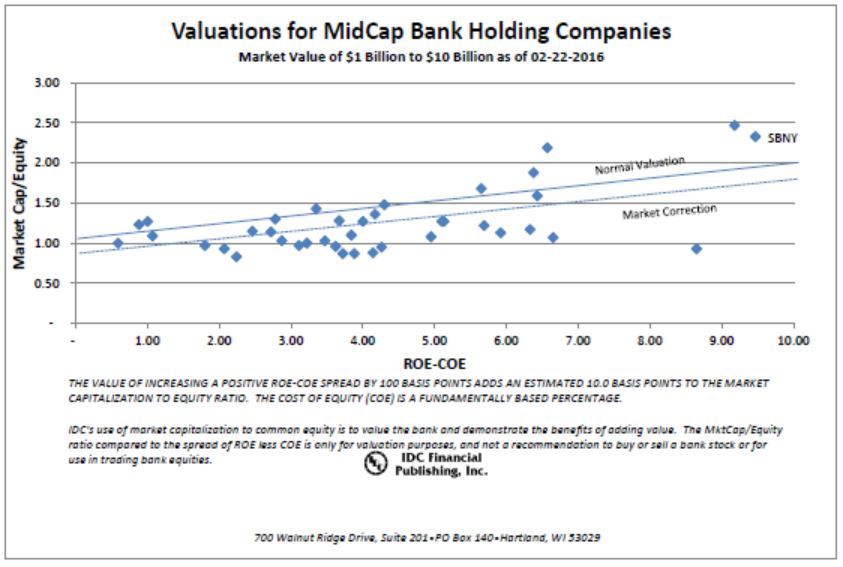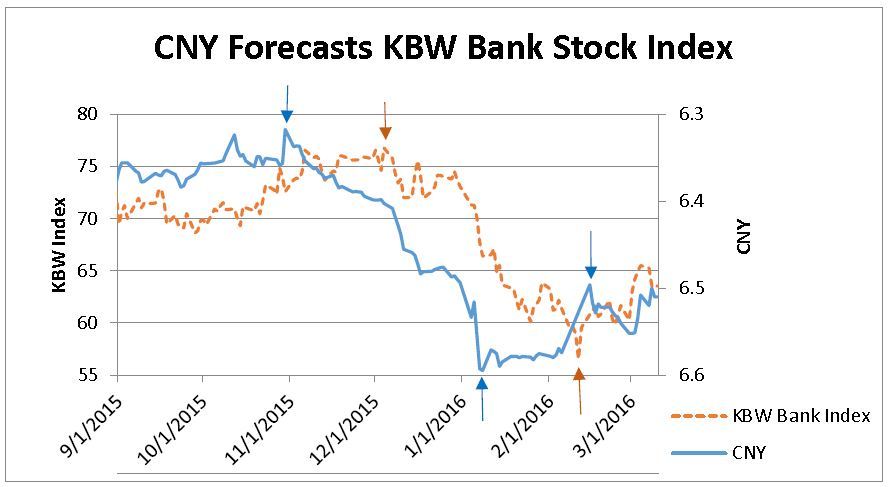Creating Shareholder Value in Midcap Banks - The Benefits of Living on the Positive Valuation Slope
The mission of a bank is to operate a safe and sound financial institution, while creating shareholder value. The value of a bank, defined by the ratio of market value to common equity, most often is directly related to the return on equity (ROE) less the cost of equity capital (COE). The enclosed chart illustrates the benefits of living on the slope, or realizing a higher market value to common equity as the spread between ROE and COE increases.
The Market Capitalization/Book Common Equity compared to IDC’s ROE less COE for midcap bank holding companies in the enclosed chart demonstrates the usefulness of a cost of equity capital tied to the long term U.S. Treasury yield to determine the price to book value. IDC defines ROE as net operating profit after tax (NOPAT ROE) for the past four quarters ending December 31, 2015, and the level of long term bond yields as of December 31, 2015. Size of the bank and standard deviation of the operating margin (inverse to the efficiency ratio) define risk in calculating COE.
The benefits of a high market capitalization to common equity are twofold. As an example, one benefit is Signature Bank (SBNY) sells at a market value equal to 2.3 times equity due to a spread of ROE less COE of 9.5%. The second benefit is a high ROE generates a high reinvestment rate or growth in common equity, thereby increasing market value at the reinvestment rate.
Signature bank demonstrates a simple business model stressing loans and deposits with only a few branches. Their customers tend to be private businesses and high profile individuals. The bank, with $33 billion in assets, has a very clean balance sheet and very low noninterest expense when compared with its peers. Although heavily weighted in commercial real estate loans, Signature Bank has been able to maintain low levels of non-performing assets. They also prefer to avoid high-risk derivatives. All of these characteristics with a high ROE provided 25 consecutive quarters of earnings growth, which, in their case, led to increasing share values. Their share value increased 428% in the last decade and outperformed their peers.
Bank stocks corrected in price in January and February 2016 as predicted by the weakening of the Chinese currency (CNY) a month prior. The reversal in the CNY in early January predicted a recovery in bank stocks into mid-March 2016. Strength in the CNY below 6.50 would indicate higher bank stock prices in the second quarter 2016. Weakness in CNY below 6.60 toward 7.00 would forecast a further correction.


